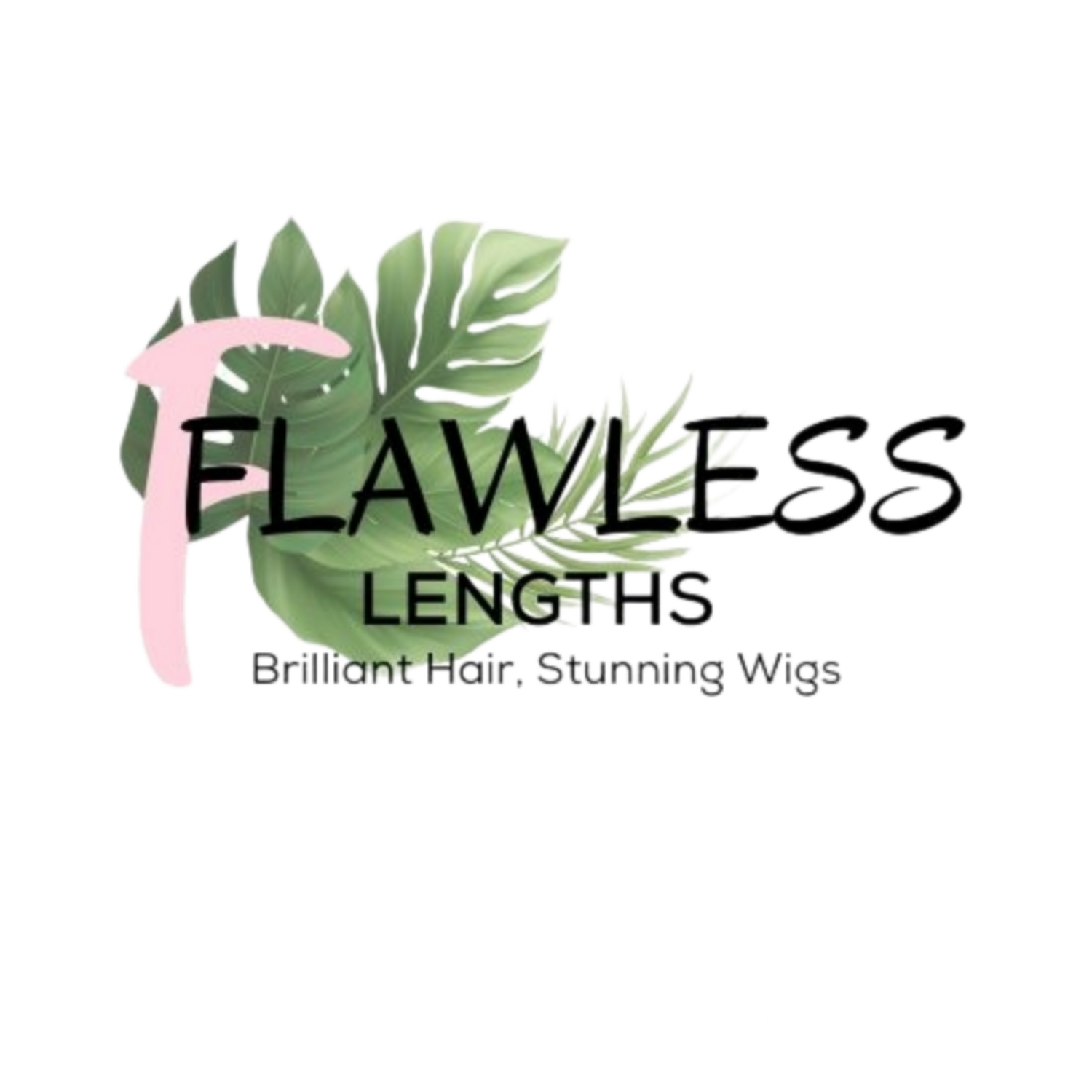Wig Care Guide
Flawless Lengths Wigs are 100% top quality virgin human hair and processed(colored) virgin human hair. We want you to get the most out of your lace wig. The more love you show it, the longer your wig will stay gorgeous!

Putting your Wig on
Braid or tuck your hair and pin it up away from front, sides and nape of your head. If you choose to wear a wig cap liner, it will help to keep your hair in place.
Hold cap at the front of your forehead, place the wig on your head and position at hairline. Pull cap back down around your head and make final adjustments.
For a customized comfort fit, use the adjustable hook tabs at the back of your wig.
Tuck in any stray hairs around the edges, underneath the cap. Style as desired.
One of our most popular items. Perfect for everyday use. Exceptional quality and choice.

Washing Your Wig
*I recommend washing your human hair wig or hairpieces every 6 - 8 wears, over time you will learn to follow your instinct when it is best to wash and maintain your wig.
Before washing your human hair wig or hairpiece, gently remove any tangles using a paddle brush or wide tooth comb without tugging on the hair.
Hold wig or hairpiece under cool to luke warm running water so hair is traveling in the same direction. Apply a small amount of shampoo designed for human hair and gently lather the hair with shampoo while making sure the hair continues to travel in the same direction. You do not want to rub the hair, particularly in the wrong direction, as this will cause tangles.
Rinse thoroughly with cool water until it runs clear.
Apply conditioner only on hair, avoiding the base cap of wig or hairpiece. (applying conditioner on base may weaken knots).
With fingers, work conditioner through the ends of the hair for about 3 - 5 minutes.
Rinse thoroughly in cold to luke warm water until the water runs clear.

Drying & Styling
You’ve got this.Wrap wig or hairpiece in a towel and gently pat to remove excess water.
DO NOT use a brush to detangle your human hair wig while it is wet, gently use a wide tooth comb.
Let the hair completely dry, this will protect and ensure the longevity of the wig. However, you can use a digital setting hair dryer at lower temperature settings of not more than 350 degrees.
Apply a small amount of Leave In Conditioner or Treatment Mist to the hair only (not the lace or cap), let it dry and style as you wish.
Store your wig on a wig stand or form that is smaller than the base of the cap to prevent the cap from stretching.
Direct sunlight will fade the hair so avoid storing your wig where it will be exposed to light.
Do not wear your hairpiece while sleeping. It may result in hair loss, breakage and matting. If you do, a silk/satin bonnet or pillow case is required.
Lighter hair colors are more delicate than darker colors because additional processing is needed to achieve the light colors.
Over time, your wig will lose hair. This is a natural part of the life cycle of your wig.
Avoid contact with chlorinated water, sea water and hot water to avoid damage to your wig.





